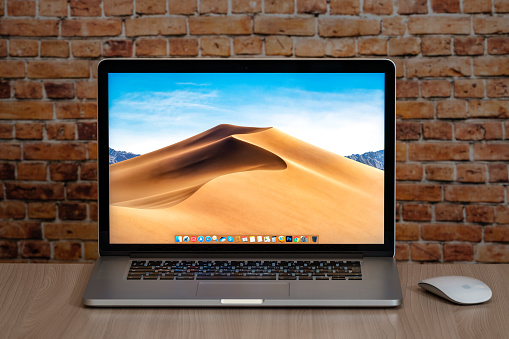The question is: how do I find out what is slowing down my Mac? Macs are pretty fast computers. Performing a task on a Mac feels snappier compared to Windows computers, especially on the M1 Macs.
Using a speedy computer isn’t all that good too. When you get used to the speed, you never want to go back. If you’ve been using an incredibly fast Mac, you’ll always seem to notice even minute flaws.
When your Mac starts to run slowly, it is almost always due to some resource-intensive software clogging down the performance.
If you’re determined to fish out the culprit behind your computer’s slow speed, you’re at the right place. In this guide, you’ll learn how to find out what is behind your Mac’s sluggishness, and how you can get rid of it.
How Do I Find Out What Is Slowing Down My Mac?
There is no better way to fix a problem than finding out exactly what the problem is. If you notice that your mac has been slowing down over time, the first step in curbing it is finding out the programs causing the slowdown.
Fortunately, Apple is aware that some resource-intensive applications don’t close completely even when you’re not actively working on them.
To help you speed up your mac, Apple has baked in the Activity Monitor into your computer. Using the activity monitor, you can uncover some of the apps using most of your CPU power.
In this section, you’ll learn how I use the Activity Monitor to find out what is slowing down my mac, and how you can too.
How to find out what is slowing down a mac using Activity Monitor
As I’ve hinted above, Activity Monitor is built into your mac to help you find out the apps making your computer run so slow.
Here is how to use it to find the erring apps to speed up your painfully slow mac.
- Open Activity Monitor
You have to open it to use it right? The first step to getting the Activity Monitor to work for you is opening it.
To open the Activity Monitor on a mac, you have to open the Applications folder. Navigate to Utilities and open Activity Monitor.
If that sounds like many steps, you can hit Command + Space to open Spotlight and start typing “activity monitor.” Once Activity Monitor shows up in Spotlight, click on it, and you’re good to go.
It’s as easy as that.
- Sort the processes by CPU usage
When you get into the Activity Monitor interface, you’ll see a list of the processes currently running on your mac.
If you have some background with the Windows operating system, this is the equivalent of the task manager (but with a better interface).
The Activity Monitor does what its name says: monitors and reports activity on your mac. It’s up to you to use the reported data to troubleshoot your mac’s slowdown.
When your mac slows down, it’s almost always due to a high load on the CPU. If your computer is slow, you can always blame it on the process using the most CPU.
To find the process using the most of your CPU speed, you’ll need to click on “CPU” from the five tabs on the app. The other tabs available include Memory, Energy, Disk, and Network.
- Find the apps with constantly high CPU usage.
Yes, and that’s it. Once you’ve sorted the processes by CPU usage, you should notice one or two processes always sticking up at the top; these processes are responsible for your device’s slowdown.
If you don’t recognize these processes, you might want to plug their names into Google to see what they’re doing. If they are applications that you don’t need, you can remove them right away.
Heads up, your browser will almost always be the most CPU-intensive app if it’s open. It’s not easy to do away with your browser, isn’t it?
- Find the apps using high memory.
High CPU usage isn’t the only thing that makes a computer slow. If your RAM usage is hitting the roof, you might also have to deal with a slow computer.
If you want to single out apps using the most memory, you can just sort the processes by memory, and you’ll have the most RAM-intensive tasks staring at you in the face.
Again, your browser will be the most memory-intensive program unless you have malware or some other programs using your resources in the background.
How To Remove What Is Slowing Down A Mac
When you know of what is slowing down your computer, what next? You remove them.
In this section, you’ll learn how to remove memory and CPU-intensive processes on your computer to speed it up.
To remove the processes slowing down your computer, you’ll need to figure them out. If you skipped over to this part, you must go back to read how to find them, sorry.
When you know the exact processes slowing down your mac, it’s time to flush them out, right?
Except that isn’t right. You don’t always remove resource-intensive processes on your mac. While some (like browsers and antivirus software), others are downright essential and must always be on your computer.
If the process has a name that cannot link to any program, you should consider plugging that name into Google to see what it does. If it is a system process, then you should never remove them.
Instead, you should restart your computer to see if that speeds it up. If you continue to experience the slowdown, it might just be time to upgrade your mac.
However, if the process is tied to an essential app in your workflow, you may have to learn to live without it.
If it happens to be your browser, you can learn to change your browsing habit to suit your mac’s capabilities; maybe you should learn to keep fewer Chrome tabs.
Finally, if the erring process is neither an installed program nor a system process, you can always Quit the process. You should also run a malware scan to detect if it’s harmful to your computer.
Conclusion
You don’t have to live with a slow computer. Apple knows that, and it shipped your mac with the insanely useful activity monitor.
It’s up to you to use it in finding out what is slowing down your Mac. We don’t want to leave you to figure it out, so we’ve prepared a comprehensive guide.
How do I find out what is slowing down my Mac? This article is the only guide you’ll ever need to know how you can find and remove the apps slowing down your mac.

